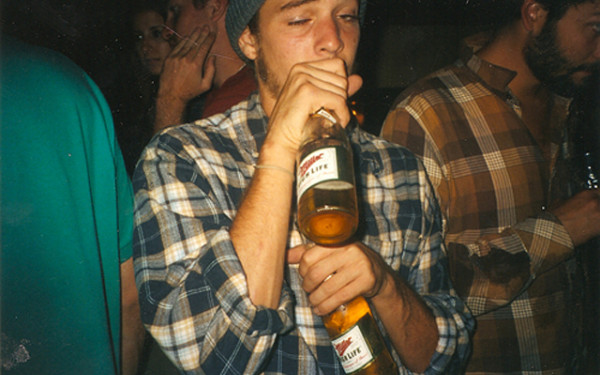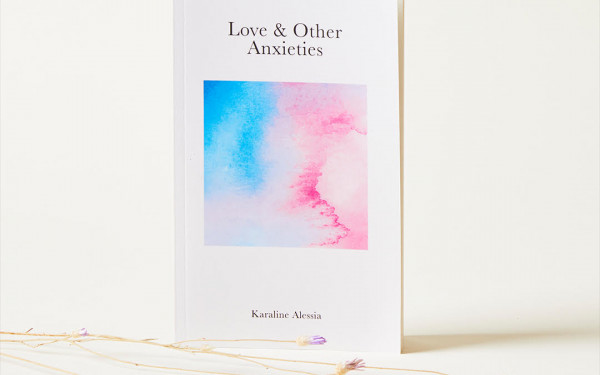Designing poetry
Four Minutes To Midnight takes your words and makes them art
What do the words “radical typographic experimentation” mean to you?
Nothing? Then you need to get yourself a copy of Four Minutes To Midnight (23:56).
The Montreal zine, created by designer and sometimes-Concordia-teacher Kevin Yuen Kit Lo and his creative partner John W. Stuart, is a compilation of poetry and art that wants to be more than just a typical anthology.
For example: there have been 10 issues of 23:56 so far, and while much of the material was generated through open calls for submissions, a large section of issue 11 will feature only the work of Montreal artist Sophie Jodoin and American beat poet F. A. Nettelbeck.
Nettelbeck is an often-overlooked member of the original Beat poets. He has published 20 books of poetry and used to head the now-defunct poetry magazine This Is Important, which published work by writers like William S. Burroughs and Allan Ginsberg in the ’80s and ’90s.
“We had featured him in the last two issues and thought that he was a really important and sort of marginalized character,” said Lo. “I met him online, I sent him some copies and he had a really positive response. He jokingly asked when I was going to do a book for him and I thought, hey, you know, why not? We have the ability to do it and he allows us to do what we want to do with his work. He thinks it works with what he’s doing.”
The concern that writers might not be okay with what the magazine will do with—or to—their work is one that the editors of most other literary magazines don’t usually face. But, as it says on the zine’s website, 23:56 is not just a literary magazine; it’s “a space for radical typographic experimentation, blurring the line between form and content.”
Lo explained: “A lot of the stuff we’ve done has been experimental typography, experimental poetry, really bridging the gap between text and image. That’s where my main interest is. [Nettelbeck]‘s been comfortable with us fucking with his words.” He smiled. “Or, um, I hope he is.”
However, the magazine’s experimental approach hasn’t scared contributors away. “Most of the writers that have worked with us, that’s generally the agreement we have with them,” said Lo. “People send us stuff and they realize that we’re going to mess around with it in different ways.”
This agreement is a key part of “the Fugue,” a long poem that Lo, Stuart and various other contributors have been working on since the magazine’s inception. “It’s a kind of collaborative typographic epic poem,” said Lo. “We take a lot of different voices and smash them together and try to make a song out of it.”
All the text in “the Fugue” comes from contributors, who post lines on the comments page of the magazine’s call for submissions, in a kind of web 2.0 version of the Surrealists’ Exquisite Corpse game. Lo takes the words and turns them into a visual poem, which then ends up in the zine.
While “the Fugue” can be both linguistically and visually chaotic, he’s quick to point out that there’s nothing haphazard about it.
“Online, a lot of the time, there’s this idea of just amassing content […] the idea is ‘let’s see what kind of keywords we can pull out of the crazy interwebs and pull it all together and it’s going to be meaningful.’ And it’s not. I think having an editorial approach is really important.”
Giving direction to a project that aspires to be a dialogue, a poem, a piece of art, and a representation of a coherent editorial point of view all at once has been a complex task for Lo. Creating visual poetry out of other people’s lines might seem like a daunting task, but he says he finds it inspiring.
“The form actually gives me a great way to write without having to write. I get to edit words from all these brilliant contributors, and then still express some sort of meaning that I want to express, and add to it through its visual form, through its composition and structure.”
That kind of attitude is what separates 23:56 from other literary arts magazines. Instead of just pairing pieces of art up with poems, the zine erases all distinctions between the two. “Radical typographic experimentation,” as it turns out, means exactly what it sounds like — fucking with words.
This article originally appeared in Volume 31, Issue 1, published June 11, 2010.


_600_832_s.png)


_600_375_90_s_c1.jpg)
